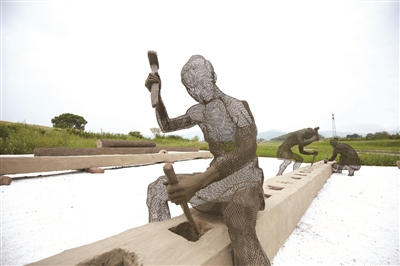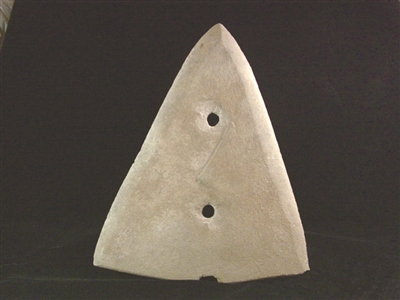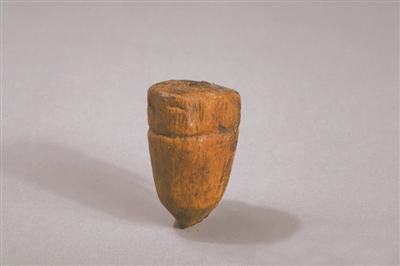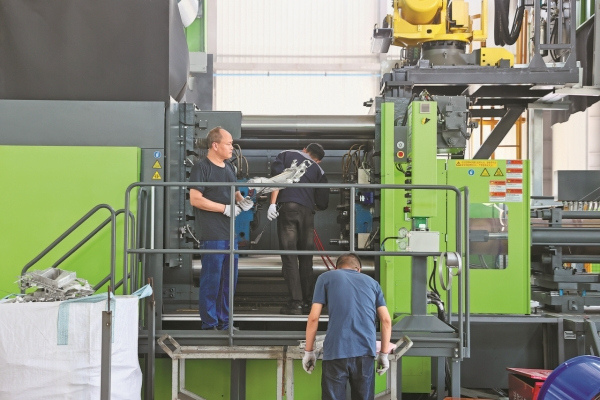
(In pic: Liangzhu National Archaeological Site Park)
Zhongjiagang ancient river was the north-south main passage in the ancient city of Liangzhu. A large number of tools, semi-finished products and wastes related to the production of jade ware, lacquer ware, stone implements and horn implements were unearthed from the piles of wastes distributed at the terraces and dumped on both banks of Zhongjiagang ancient river. According to the archaeological exploration findings, both banks of Zhongjiagang ancient river should be the main distribution areas of handicraft workshops.
During the Liangzhu Culture period, handicrafts covered a whole spectrum of types, and their techniques reached a high level. In particular, jade ware represented by cong, bi, yue (three kinds of jade ware) had reached a peak in the pre-historic jade ware production of China in terms of quality, quantity, size, variety and carving techniques and formed a jade ritual system with a far-reaching influence.


Liangzhu Culture had dozens of stone implements such as stone broad-ax, stone adze, stone arrowhead, stone sickle, stone plough and stone “earth breaker”, which were the most diverse in the same period. The production technique of stone implements was superb. The craftsmen at that time already mastered a complete set of techniques such as selection and cutting of stone materials, carving, drilling and polishing.
The wood and bamboo products of Liangzhu Culture included bamboo baskets, bamboo mats, bamboo crates, wood hammers, clogs, oars, spears and arrowheads, which indicated the rich variety of wood and bamboo products at that time.
Surprisingly, the primitive waist looms appeared during Liangzhu Culture period, and there were fabrics made of plant fibers such as jute, kudzu and even silk.
The use of lacquerware was more common during that period, and even the funeral utensils were lacquered. Lacquerware inlaid with jade beads has been discovered in large tombs such as Fanshan and Yaoshan.
In addition, the civil construction technology of Liangzhu Culture was also stunning. The construction site of large palaces and rows of large column holes discovered at Mojiao Mountain historical site and the rows of wooden columns and foundations discovered at the Miaoqian historical site were all witnesses of the developed construction industry at that time.
(Executive Editor: Yongliu He)

